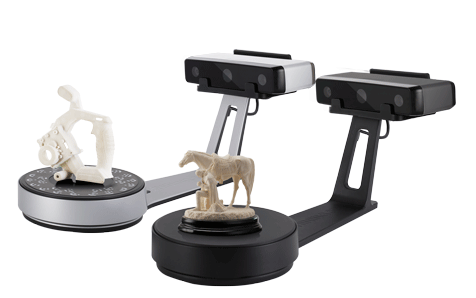
How To Get Shining 3D Design with EinScan Reverse Engineering Tool
Table of Contents
Those looking for a 3D scanning software and tool have plenty of choices. There are handhelds, tripod models, desktop models, and more. They are currently at the forefront of today’s scanner technology. Which scanner is right? Organizations or manufacturers who want to get in on this new technology have a daunting list of scanners to choose from. Getting a few lessons on the basics is necessary to make a wise decision.
Diving Into The New World Of Generative Design
The tools to get a scanning system up and running are varied. This is because they come from different places on the globe. Do you need a closed source software solution or one where the code is easily viewable? One solution to generative design in a 3D scanner is to use already existing software. This type of design is a solution for creating parts that are lighter and stronger. It minimizes waste by creating parts with the minimum amount of material needed. Minimizing waste helps the environment as well as the bottom line of a manufacturing plant. Some say that this type of design will give 3D designers superpowers to do their job. Why is that? It is because the modern 3D design is starting to be mixed with algorithms. Artificial intelligence will be helping these designers to create with abilities that have not yet been seen.
Reverse Engineering With The EinScan Tool
EinScan software uses reverse engineering technology to make new products from existing ones. The process is elaborate but mostly done by scanning a part and finding new ways to manufacture it. The software uses cues from the designer, including coloring sequences, slicing off parts, and other tactics to break parts down into their basic forms. It can then be reassembled in a slightly different manner from the original part. Recreating a complicated part now takes less time than it used to. EinScan is leading the way in this endeavor. Easily creating a new, and likely better, model of an existing part is revolutionary. Putting this powerful technology into the hands of everyday people is exemplary. Historically speaking, this type of reverse engineering was only for bigger corporations with deep pockets. Now it is in the hands of smaller factories.
Some Handheld Scanners Go Way Beyond Toys.
Some handheld scanners do well on medium-sized objects. They are equipped with nicer cameras, decent software, and high resolution. Some of them even look like ray guns but do not let that fool you. The first pass on the nicer handheld 3D scanners produces a rough shape, but as the gun continues to be pointed, the details start to come forth. Some user talent is required. The right distance must be maintained between the scanned object and the scanner. This is not as hard as it may sound, as the higher-end scanners help with this task.
The user gets to do the physical legwork around the desired object. This means a cable must be used that has enough length to go completely around the scanned object. Is your scanned object a fat-stomached Mickey Mouse? You may be hard-pressed to go all the way around him. A short cable will not allow the user to make a 360-degree sweep. Still, this type of scanner can be very capable of moderately sized objects. Something close to ten or eleven feet would be the maximum size. One such model that does well scanning at this range and size is the Solid Edge model from EinScan. It fulfills the prerequisites for being an up-scale handheld scanner beautifully.
Consider The External Support Needed For 3D Scanners.
What will be the external support for a 3D scanner? This depends. If many large scans are going to be required, a hand scanner is not going to suffice. There will probably be a separate room needed to control the lighting situation. The software needed to run the scanner may not be free for larger jobs. That same 3d scanning software may need a powerful processor to do the number-crunching, so a new PC may need to be bought. Large organizations will need to have special training set aside for future users. It takes time to learn to operate the Solid Edge software. Do you want to do reverse engineering of other objects? Be sure your hardware is up to par. Fast processors are a must. Do your homework and factor in these external details when deciding what your scanning needs will be.
Go With a Trusted Name.
Whether large, small, or medium-sized objects will be scanned, EinScan is a name to remember. These are considered high-quality tools from the handheld Solid Edge model to the EinScan SP desktop 3D Scanner. Some come with professional 3D CAD software. Join their customers in 70 countries in choosing these 3D scanning software models for manufacturing or organizational use.

